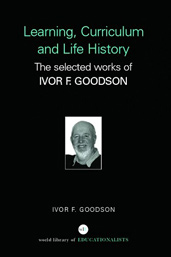Learning, Curriculum and Life Politics: the selected works of Ivor F. Goodson
Long Waves of Educational Reform
These continuities have, of course, been systematically observed by some historians of education. The focus has tended to be on broad patterns of organizational persistence and evolution (e.g. Cuban 1984); on the ‘persistence of the recitation’ (Westbury 1973); on the fate of specific reform policies (Tyack & Hansot 1992; Tyack & Tobin 1994); or on reforms in particular areas – such as curriculum under represented (e.g. Goodson 1994). A range of work has studied the links between cycles of economic growth and educational expenditure. For instance the British History of Education Journal published a special issue derived from a conference on Education and Economic Performance (History of Education 1998). French historians have been studying long waves of economic performance and education for some time particularly those located at the University of Montpelier (Fontvieille 1990). Following our Spencer study and the discerning of long waves within the data, Carpenter produced a very interesting version of his doctoral thesis that look at long cycles of change related to educational expenditure in the 19th and 20th Centuries with a particularly interesting analysis of the period 1945 – 1973 (Carpenter 2001).
As noted in this chapter the work of historians David Tyack and Larry Cuban at Stanford has been particularly insightful on cycles of reform as has the work of their colleague in sociology, John Meyer. Work by Murphy on waves of reform within US educational policy add further to our cognitive map of cycles of school change.
The work of historians then has patiently sought to elucidate the deep contextual inertia within patterns of change and continuity whether cycles of reform are long or short. In the world of change initiatives and indeed a good deal of change theory such complexity and contradiction has too often been ignored or denied. Moreover our longitudinal sweep needs to search beyond internalistic patterns of organizational persistence and evolution to study the interaction between these internal patterns and external movements. External movements that are within economic and social structures, and in the ‘external consistencies’ (Meyer & Rowan 1978), which impose limits upon the possibilities for educational change and reform. Change theory, which focuses only on internal movements in each school, ignores the broad changes in external and economic context, which set parameters and possibilities for internal change.
The dominant educational change theory of the moment then works with two inter-linked lacunae. Firstly, questions of time and historical periodization are ignored or glossed over in favour of a belief in unique, contemporary possibility. Secondly, the broad sweep of changes in economic and external context are subordinated to a belief in more internalistic, institutional change patterns.
For these reasons, above all, because change must be viewed historically, our study will adopt a focus on change located in historical periods.1 This approach is derived from the annaliste methodology for understanding social and historical change. In a real sense, the Annaliste School develops a combination of history and sociology. In England, this approach has been developed by the late Philip Abrahams and by Peter Burke in his book History & Social Theory (1993). More recently, the Journal of Historical Sociology has pursued the same themes of enquiry.
